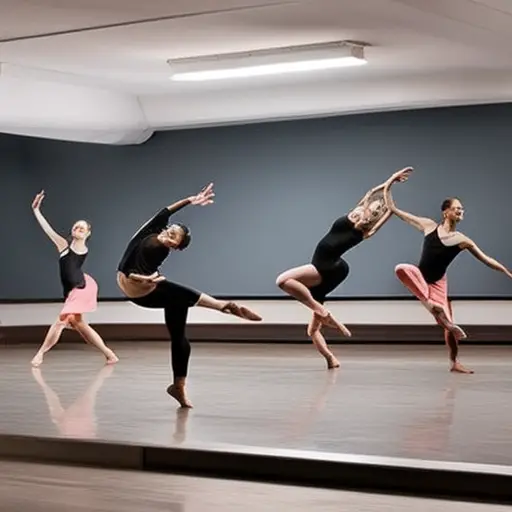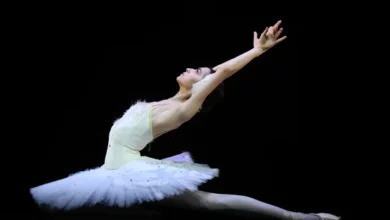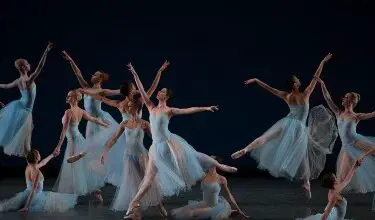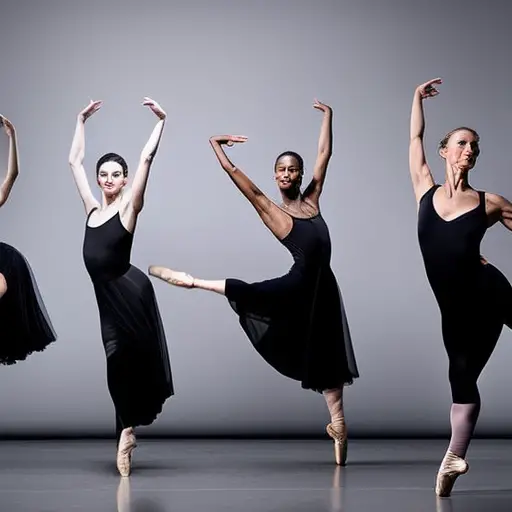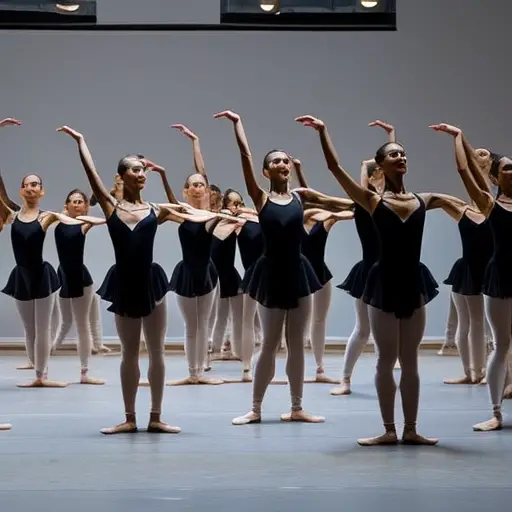Teaching Choreography: Methods and Techniques
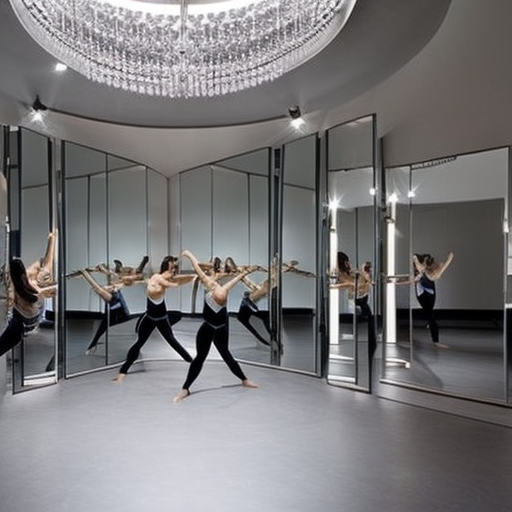
In the world of dance, teaching choreography requires a delicate balance of artistry and pedagogy. One such example is the case of a seasoned choreographer who must guide a group of diverse dancers through a complex routine.
This article explores various methods and techniques employed by dance educators to effectively teach choreography. From breaking down intricate movements to fostering collaboration and evaluating the final product, this comprehensive guide offers valuable insights for both experienced dance professionals and aspiring choreographers.
Understanding the Elements of Choreography
How can choreographers effectively communicate their ideas through the use of movement? Understanding choreographic structure and exploring movement dynamics are key elements that enable choreographers to effectively convey their ideas. Choreographic structure refers to the organization and arrangement of movement phrases, while movement dynamics encompass the quality, intensity, and energy of the movements themselves.
To effectively communicate their ideas, choreographers must have a strong understanding of choreographic structure. This involves considering the sequence, repetition, and variation of movements to create a cohesive and meaningful dance. By carefully crafting the structure, choreographers can guide the audience’s attention and create a narrative or emotional arc.
Exploring movement dynamics is another crucial aspect of effective communication. This involves experimenting with different qualities of movement, such as speed, weight, and flow. By manipulating these dynamics, choreographers can evoke different emotions and convey specific ideas or concepts.
Understanding choreographic structure and exploring movement dynamics go hand in hand. By understanding the structure, choreographers can make intentional choices regarding movement dynamics to effectively communicate their ideas. For example, a fast and sharp movement may convey excitement or urgency, while a slow and fluid movement may evoke a sense of calm or introspection.
In the subsequent section, we will delve into the process of breaking down complex movements to ensure clear communication and understanding for dancers.
Breaking Down Complex Movements
To effectively teach choreography, choreographers must break down complex movements into smaller components for clearer comprehension by dancers. Breaking down complex movements helps simplify choreography and allows dancers to grasp each step with greater ease. Here are three effective techniques that choreographers can use to break down complex movements:
-
Isolate individual body parts: By focusing on one body part at a time, dancers can better understand the specific movements required. For example, in a complex turn sequence, isolating the arm movements first and then adding the leg movements can help dancers master the coordination required.
-
Use verbal cues: Providing clear and concise verbal instructions can help dancers understand the sequence and timing of the movements. Choreographers can describe the movements in detail, using descriptive language and analogies to create a mental image for the dancers.
-
Break down movements into smaller sections: Rather than overwhelming dancers with a long sequence, breaking it down into smaller sections allows them to learn and practice each section before putting it all together. This approach promotes a step-by-step learning process and builds confidence in dancers.
By breaking down complex movements into smaller components, choreographers facilitate a deeper understanding and mastery of the choreography. This in turn allows dancers to execute the movements with precision and confidence.
Moving forward, let’s explore the importance of utilizing visualization and imagery in teaching choreography.
Utilizing Visualization and Imagery
When it comes to teaching choreography, utilizing visualization and imagery can be powerful tools in enhancing movement and harnessing creativity.
Visualization allows dancers to mentally picture the desired movements, helping them to better understand and execute complex choreography.
Imagery, on the other hand, encourages dancers to tap into their imagination and connect emotionally with the movements, adding depth and authenticity to their performance.
Enhancing Movement Through Visualization
One effective method for enhancing movement is by incorporating visualization and imagery techniques. Movement visualization allows dancers to mentally rehearse and imagine their movements before physically executing them. This technique helps to improve body awareness, coordination, and precision.
Kinesthetic imagery, on the other hand, involves mentally experiencing the sensations and feelings associated with movement. By visualizing the desired outcome and engaging all the senses, dancers can enhance their performance and bring a level of authenticity to their movements.
Incorporating visualization and imagery techniques can also help dancers overcome mental blocks and fears, as well as foster creativity and expression. By harnessing the power of visualization and imagery, dancers can take their movement to new heights and create truly captivating performances.
Harnessing Creativity With Imagery
Harnessing creativity through the use of imagery is a powerful technique for inspiring dancers to explore new movement possibilities and express their artistic vision. By incorporating visualization and imagery into their choreographic process, dance educators can guide students towards a deeper understanding of their emotions and spark inspiration for their creative work.
Imagery allows dancers to tap into their imagination and connect with their inner world, helping them to communicate their ideas and feelings through movement. By harnessing emotions through imagery, dancers can delve into their personal experiences and create authentic and meaningful choreography.
Through the use of vivid and descriptive imagery, dancers are encouraged to think outside the box and explore unconventional movement choices. By visualizing different scenarios, objects, or environments, dancers can expand their movement vocabulary and discover unique ways to express themselves.
Incorporating imagery into dance education not only enhances the creative process but also provides dancers with a tool for self-expression and artistic growth. By harnessing emotions and sparking inspiration through imagery, dancers can unlock their full creative potential and create compelling and impactful choreography.
Incorporating Improvisation Techniques
Incorporating improvisation techniques in choreography not only allows for creative exploration but also benefits dancers in various ways.
Through improvisation, dancers learn to trust their instincts, think on their feet, and develop their unique movement vocabulary.
Additionally, incorporating student input in the choreographic process fosters a sense of ownership and engagement, leading to more meaningful and authentic performances.
Benefits of Improvisation
Exploring the benefits of improvisation enhances choreography by fostering creativity and spontaneity in dancers. Incorporating improvisation techniques allows dancers to tap into their artistic instincts and unleash their unique movements. Here are some key benefits of improvisation:
-
Sparks creativity: Improvisation encourages dancers to think outside the box, experiment with different movements, and create new choreographic ideas.
-
Enhances spontaneity: By practicing improvisation, dancers develop the ability to think on their feet and respond to unexpected situations, making their performances more dynamic and engaging.
-
Cultivates individuality: Improvisation allows dancers to express their personal style and emotions, helping them develop their own artistic voice.
By embracing the power of spontaneity and incorporating improvisation techniques, choreographers can create innovative and captivating dance pieces.
This leads us to the next section: incorporating student input, where we explore the importance of involving dancers in the choreographic process.
Incorporating Student Input
By actively engaging students and fostering a collaborative environment, choreographers can effectively incorporate improvisation techniques and gather valuable input from their dancers.
This process not only allows students to contribute their ideas, but also empowers them to take ownership of their work. Student engagement is a crucial aspect of the choreographic process, as it encourages dancers to explore their creativity, express their individuality, and develop a sense of agency.
Incorporating improvisation techniques, such as structured improvisations or guided prompts, provides students with the opportunity to experiment with movement and explore different possibilities. It also allows them to contribute their unique perspectives and ideas, which can enrich the overall choreographic process.
Enhancing Musicality and Rhythm
Through the utilization of various techniques, choreographers can develop dancers’ musicality and rhythm, allowing them to enhance their overall performance. By improving coordination and exploring musicality, dancers can become more connected to the music and express themselves more effectively through movement.
To enhance musicality and rhythm, choreographers can employ the following techniques:
-
Musical Mapping: This technique involves breaking down the music into its different elements, such as rhythm, melody, and dynamics. Dancers then create movements that correspond to each element, enhancing their understanding of the music and enabling them to synchronize their movements with the music more effectively.
-
Rhythmic Drills: Choreographers can incorporate rhythmic exercises into their training sessions to help dancers develop a stronger sense of rhythm. This can include clapping, counting, or using percussion instruments to practice different rhythms. By doing so, dancers can improve their ability to stay on beat and execute precise movements.
-
Improvisation: Encouraging dancers to explore improvisation allows them to develop their musicality by responding directly to the music in the moment. This technique helps dancers develop a deeper connection to the music and fosters creativity in their movement choices.
Creating Meaningful Transitions
To ensure a seamless flow between movements, choreographers can use personal pronouns such as ‘he’ or ‘she’ and coordinating conjunctions such as ‘and,’ ‘but,’ or ‘or’ to create meaningful transitions. These linguistic tools help maintain the fluidity and flow of the choreography, allowing the dancers to smoothly transition from one movement to the next.
By incorporating personal pronouns, choreographers can establish a sense of continuity and connection between different sections of the dance. For example, a choreographer might use the pronoun ‘she’ to refer to a dancer who is about to perform a solo, signaling a shift in focus.
Coordinating conjunctions, on the other hand, can be used to link contrasting or complementary movements, adding variety and interest to the piece. By using these techniques, choreographers create seamless transitions that keep the audience engaged and the dancers in sync.
As choreography is often a collaborative process, it is essential for choreographers to foster collaboration and group dynamics.
Fostering Collaboration and Group Dynamics
Choreographers must actively cultivate an environment of collaboration and group dynamics, where dancers feel empowered to contribute their ideas and work together towards a cohesive vision. This fosters a sense of ownership and investment in the creative process, leading to a more engaging and impactful performance.
There are several key strategies that choreographers can employ to foster collaboration and build strong group dynamics:
-
Collaborative decision making: By involving dancers in the decision-making process, choreographers can create a sense of ownership and investment in the work. This can be done through group discussions, brainstorming sessions, or asking for individual input. By valuing the ideas and perspectives of each dancer, a sense of collective ownership is fostered, leading to a stronger and more cohesive performance.
-
Building trust: Trust is essential for effective collaboration. Choreographers can build trust by creating a safe and supportive environment where dancers feel comfortable expressing their ideas and taking creative risks. Establishing open lines of communication and providing constructive feedback are also important in building trust within the group.
-
Camaraderie: Fostering a sense of camaraderie among dancers helps to create a positive and supportive team dynamic. Choreographers can encourage camaraderie by organizing team-building activities, creating opportunities for dancers to get to know each other on a personal level, and fostering a sense of unity and shared purpose.
Providing Feedback and Evaluating Choreography
Effective feedback is crucial for the development and refinement of choreography, allowing dancers to grow and improve their artistic expression. Giving constructive criticism is an essential aspect of providing feedback, as it helps dancers understand areas for improvement and encourages their artistic growth.
When giving feedback on choreography, it is important to be specific and objective. Pointing out specific movements or sequences that could be improved or enhanced can help dancers understand the areas that need further attention. Additionally, providing constructive criticism allows dancers to receive feedback in a positive and supportive manner, fostering a growth mindset and encouraging them to continue exploring and refining their choreographic skills.
Furthermore, feedback should also focus on encouraging artistic expression. Dance is a form of art, and it is crucial to acknowledge and appreciate the unique ideas and interpretations that dancers bring to their choreography. By providing feedback that acknowledges and supports their artistic choices, dancers feel empowered to take risks and explore their creative potential.
Frequently Asked Questions
How Long Does It Typically Take for Students to Master Complex Movements and Choreography?
Mastering complex movements and choreography is a process that varies for each student. The timeframe depends on factors such as prior dance experience, physical abilities, and dedication to practice. Patience, consistent training, and effective teaching methods are crucial in facilitating the learning process.
Are There Any Specific Techniques or Exercises That Can Help Improve a Dancer’s Musicality and Rhythm?
To improve a dancer’s musicality and rhythm, specific techniques and exercises can be employed. These include developing a strong sense of timing, practicing musical interpretation, and incorporating imagery to engage the dancer’s understanding of the music.
How Can Choreographers Incorporate Elements of Storytelling or Emotions Into Their Choreography?
Choreographers can infuse storytelling and emotions into their choreography by carefully selecting movements, gestures, and formations that convey the intended narrative or emotions. This can be achieved through the use of music, costumes, lighting, and staging techniques.
What Are Some Effective Strategies for Giving Constructive Feedback to Dancers Without Discouraging Them?
Giving effective feedback to dancers is crucial for their growth and development. It is important to provide constructive criticism in a supportive and motivating manner, focusing on specific areas for improvement while also highlighting their strengths.
Are There Any Specific Methods or Techniques for Teaching Choreography to a Group With Diverse Skill Levels and Backgrounds?
Inclusive teaching techniques and adapting choreography for diverse groups are essential when teaching choreography to a group with varying skill levels and backgrounds. This requires flexibility, creativity, and effective communication to ensure a successful learning experience for all dancers involved.
Conclusion
In conclusion, teaching choreography requires a deep understanding of the elements of movement and the ability to break down complex sequences.
It also involves utilizing visualization and imagery, incorporating improvisation techniques, and enhancing musicality and rhythm.
Creating meaningful transitions, fostering collaboration and group dynamics, and providing feedback are essential for the development of choreography.
By adopting these methods and techniques, dance educators can guide students in the creation of captivating and impactful dance pieces.
It is through the mastery of these skills that choreography truly becomes an art form.

